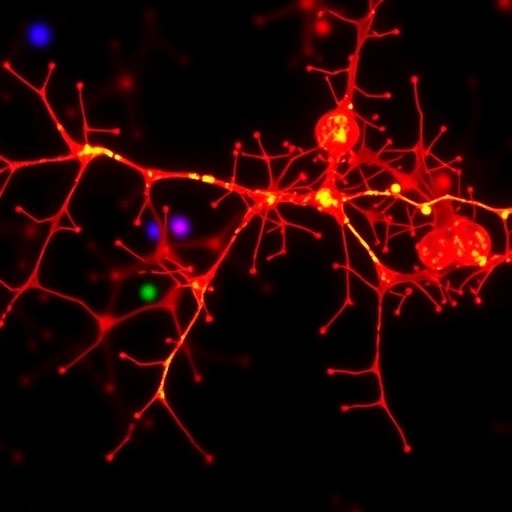The theory that cancer progression involves the acquisition by tumor cells of features similar to those of stem cells has gained strength in the scientific community.
According to this theory, tumor cells tend to "forget" the tissue from which they originated as the disease progresses, acquiring an undifferentiated phenotype associated with heightened aggressiveness and treatment resistance.
In a study whose findings were published in the journal Cell on Thursday, May 5, researchers at the University of São Paulo's Ribeirão Preto Medical School (FMRP-USP) in Brazil and collaborators in several other countries describe a method that objectively measures the degree of similarity between tumor samples and pluripotent stem cells (cells that can differentiate into nearly any type of tissue in the body).
The study focuses on "stemness", defined as the potential for self-renewal and differentiation from the cell of origin, and on "stemness indices" developed during postdoctoral research conducted by Tathiane Malta as part of a project ( supported by FAPESP and with Houtan Noushmehr, a professor in FMRP-USP's Genetics Department, as principal investigator.
"Our expectation is that in future stemness indices can be used in clinical practice as a prognostic aid, to help foresee the possibility of relapse, and to plan treatment," said Malta, lead author of the article.
To develop the methodology, the group analyzed the molecular profiles of human embryonic stem cells and compared them with data for 12,000 samples of 33 different tumor types held by The Cancer Genome Atlas (TCGA ), a US public database.
They processed data relating to genetics, including DNA sequences, and to gene expression, as well as epigenetic features – chemical reactions that influence genome functioning and hence phenotype by activating and deactivating genes.
One of the most important epigenetic mechanisms investigated in the study was DNA methylation, a chemical reaction that adds methyl groups (made up of hydrogen and carbon atoms) to the DNA base cytosine, potentially preventing the expression of certain genes.
Artificial intelligence
The molecular profiles of the embryonic stem cells and tumor cells were compared with the aid of machine learning algorithms, a form of artificial intelligence. These algorithms analyze masses of data by means of advanced statistical techniques in search of patterns that can be used to make determinations or predictions.
"We started out by assuming a degree of similarity between some sub-populations of tumor cells and pluripotent stem cells," Malta said. "We used the algorithms to identify typical molecular signatures of stem cells [stemness signatures] that could help us understand tumors and serve as predictors of aggressiveness or clinical outcome."
An index ranging from 0 to 1 was created for each tumor sample. "Tumor cells closer to 1 were more similar to stem cells and significantly more aggressive than tumor cells closer to 0," Malta said. "Metastatic tumors, for example, had high stemness indices. Furthermore, when we analyzed the clinical history of the sample donors we found an inverse correlation between stemness index and survival."
For some cancer types the researchers found that a high stemness index was associated with the presence of mutations. In the case of head and neck squamous cell carcinoma, for example, high stemness indices correlated with mutations in the gene NSD1.
The authors explain in the article that NSD1 mutation has recently been linked in the scientific literature to the blocking of cellular differentiation and the promotion of oncogenesis in this type of tumor.
The analysis also identified molecules whose expression was associated with dedifferentiation (loss of differentiated phenotype) for some cancer types. For example, higher levels of the protein FOXM1 were associated with reduced cell differentiation and increased cell proliferation in breast and lung cancer. Reduced expression of the protein ANNEXIN-A1 correlated with higher stemness indices in samples of lung adenocarcinoma.
"We believe the use of this index in future studies may help identify novel therapeutic targets against cancer," Noushmehr said. "If we can identify the point at which tumor cells acquire the characteristics of stem cells, it will be possible to look for ways to interrupt the process and avoid progression of the disease."
Noushmehr also stressed that the methodology is described in detail in the online supporting material that accompanies the article. "Any researcher interested in quantifying stemness indices for their own tumor samples can apply the method and contribute to its validation," he said.
###
About São Paulo Research Foundation (FAPESP)
The São Paulo Research Foundation (FAPESP) is a public institution with the mission of supporting scientific research in all fields of knowledge by awarding scholarships, fellowships and grants to investigators linked with higher education and research institutions in the State of São Paulo, Brazil. FAPESP is aware that the very best research can only be done by working with the best researchers internationally. Therefore, it has established partnerships with funding agencies, higher education, private companies, and research organizations in other countries known for the quality of their research and has been encouraging scientists funded by its grants to further develop their international collaboration. For more information: http://www.fapesp.br/en.
Media Contact
Joao Carlos da Silva
[email protected]
55-113-838-4381
@AgencyFAPESP
http://www.fapesp.br
http://agencia.fapesp.br/27518/
Related Journal Article
http://dx.doi.org/10.1016/j.cell.2018.03.034




